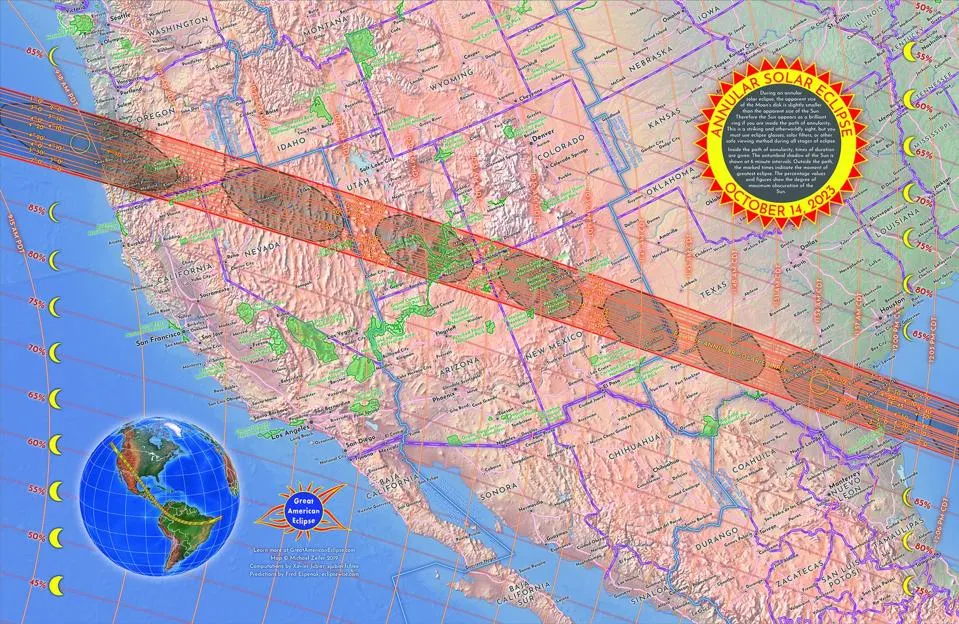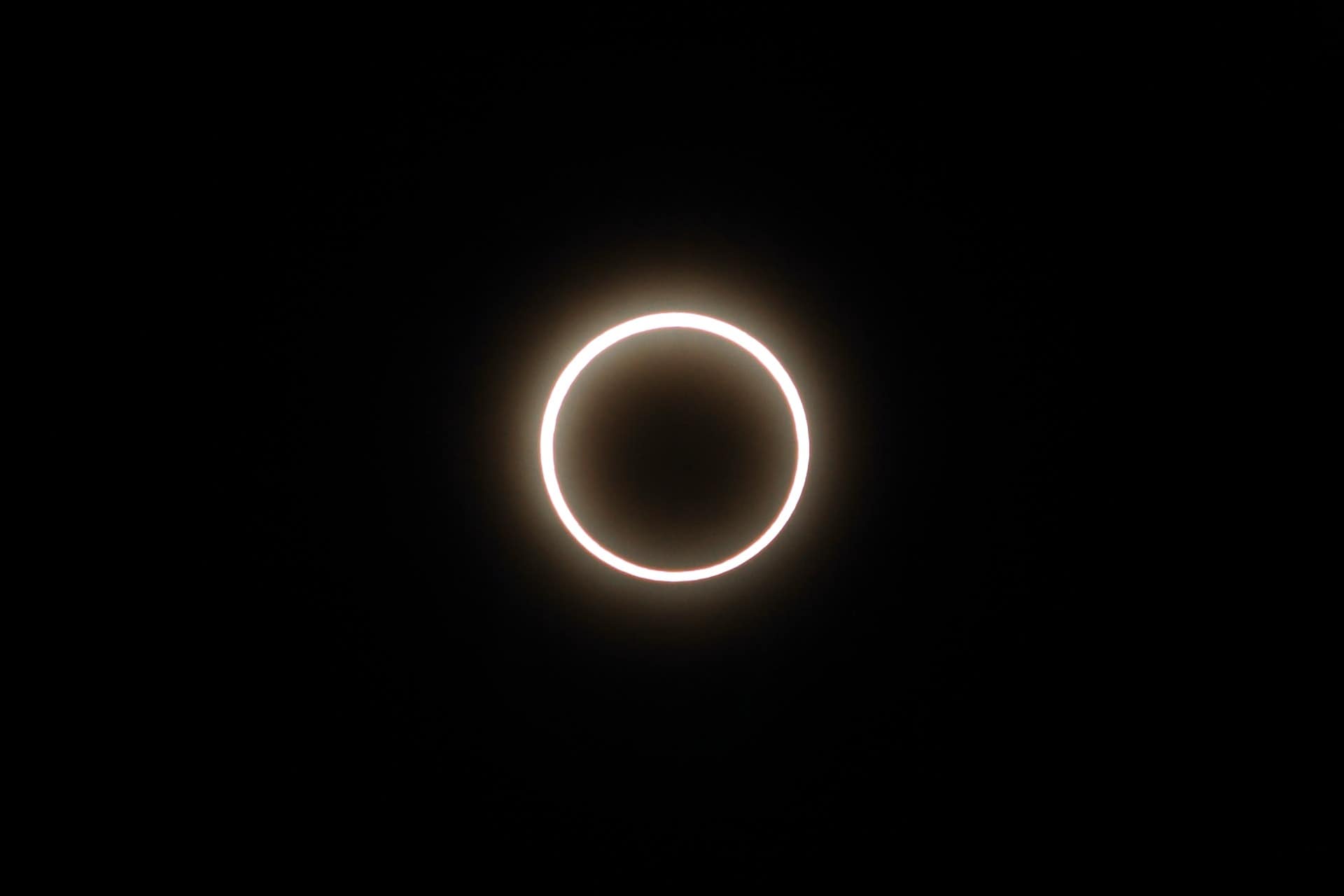On Saturday, Oct. 14, 2023, the Americas will be treated to an annular solar eclipse. The event follows in the footsteps of a similar phenomenon over the Southwest United States on May 20, 2012.
NASA says the upcoming eclipse path will pass through eight U.S. states, from Oregon to Texas. The regions through which the eclipse will pass in chronological order are:
- Southern Oregon
- Northeastern California
- Northern Nevada
- Southern Utah
- Southwest Colorado
- Northeastern Arizona
- New Mexico
- Texas
What’s an annular solar eclipse?

An annular solar eclipse happens when the moon looks slightly smaller than the sun, so it doesn’t completely cover up the sun. This creates an attractive “ring of fire” effect. As the upcoming eclipse gets closer, here is everything you need to know to understand and enjoy this rare event.
Even though this eclipse won’t completely darken the landscape like the total solar eclipse on Aug. 21, 2017, it will still be an exciting occasion. Solar eclipses happen when the new moon comes between Earth and the sun and casts its shadow on our planet. The annular type happens when the moon is in a relatively small area of the sky.
How much the moon can hide the sun’s disk depends on how far away it is from Earth. Due to the moon’s slightly elliptical orbit, it reaches its apogee (its farthest point) and perigee (its closest point) twice a month. This makes it look a little bigger or smaller in the sky. On Oct. 14, the new moon will look small, covering only 91% of the sun’s disk when seen from the narrow annularity band that stretches from Oregon to Texas and beyond.
The 2023 annular solar eclipse will be witnessed in North America, Central America, and most of South America. But the ring of fire can only be seen along a path 118 to 137 miles (190 to 220 kilometers) wide. This path will go through the western U.S. before heading over Mexico, Central America, and parts of South America.
The best view of the ring of fire, which will last five minutes and 17 seconds, will be off the coasts of Nicaragua and Costa Rica. An interactive map shows more about the annular path.
How to see the 2023 Ring of Fire eclipse
Solar protection filters are essential if you want to watch this event safely. Whether you’re looking at a partial or an annular eclipse, the risks to your eyesight are the same. Solar eclipse glasses are necessary for viewers, and solar filters are needed for cameras, telescopes, and binoculars to protect the eyes and equipment.
“During an annular eclipse,” NASA advises. “It is never safe to look directly at the Sun without specialized eye protection designed for solar viewing.”
If you don’t live on the eclipse’s path or can’t travel to see it, there’s always the virtual option. You can view the 2023 Ring of Fire online on live streams hosted by timeanddate.com and San Francisco’s Exploratorium.










